Invasive species
Invasive species
What are invasive species?
Invasive species are non-native plants and animals that were introduced, either accidentally or purposefully, into the local environment. Back in their natural habitats, they have predators or competitors that keep their population in check. However, without those restraints, they grow out of control in our ecosystem, invading parks, forests, farmland, backyards, and other natural areas.
Why are invasive species a problem?
Invasive species cause economic, social, and environmental harm that can last for decades, deeply impacting our ecosystem and changing how we use natural areas. The presence of invasive species can:
• Create dangerous situations by obstructing sightlines along roadsides.
• Injure or poison humans and animals with some plants.
• Damage infrastructure like buildings, sidewalks/roads, or drainage systems.
• Reduce property values.
• Reduce crop yields and crop quality.
• Clog waterways which increase flooding risk.
• Increase erosion or fire risk with some invasive plants.
• Decrease recreational access to parks or waterbodies
• Destroy natural habitat for our native species.
• Decrease the biodiversity of plants and animals which diminish natural beauty of Chilliwack.
• Increase costs to the City of Chilliwack and private property owners to restore areas affected by invasive species.
How can you help?
There are many things you can do reduce the impacts of invasive species! You can help by:
• Learning how to identify Chilliwack’s common invasive plants and animals.
• Knowing what you grow - avoid planting invasive species or contain them in pots or indoors to prevent their spread.
• Removing invasive plants from your property and properly dispose of them – many invasive plants cannot be composted. Do not dump your yard waste in City parks, stream banks, or greenbelts – it is illegal! If you need help managing invasive plants on your property, you could consider hiring a contractor to help.
• Preventing aquatic invasive species from spreading to another waterbody and Clean, Drain and Dry your watercraft.
• Staying on trails and cleaning your footwear to prevent hitchhiking invasive seeds from spreading into a new area.
• Being a responsible pet owner and not releasing unwanted pets into natural spaces.
• Connecting with environmental groups and volunteer to remove invasive plants from natural areas.
• Reporting invasive species to the Fraser Valley Invasive Species Society and share your knowledge with friends and neighbours.
The City’s “Weed Control Bylaw” states that no property owner shall permit or allow their parcel to become overgrown with noxious weeds. If noxious weeds are identified on your property, a Bylaw Enforcement Officer may issue a Removal Notice to ensure the plants are dealt with responsibly.
The Fraser Valley Regional District (FVRD) also plays an active role in identifying and removing “invasive” (non-native) plant species, such as tansy ragwort and giant hogweed. More information is available at the FVRDs noxious weed page.
Invasive Species in Chilliwack
 |
Knotweeds (Fallopia spp.) Knotweeds (Japanese, Bohemian, Giant, Himalayan) are extremely aggressive invasive plants. They can grow up to 10 cm per day, are able to grow through concrete, and have a very extensive root system. They are one of the world’s worst invasive species and are very difficult to control. |
|
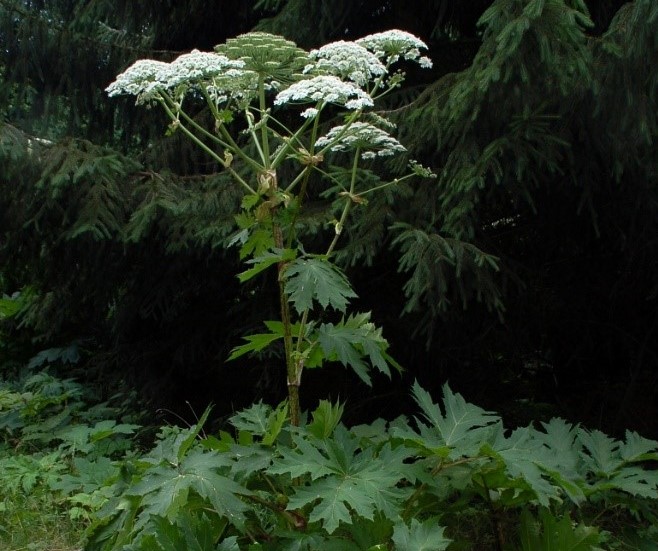 |
Giant Hogweed (Heracleum mantegazzianum) Toxic – Do not touch! This giant plant can grow up to 5 m tall with flowerheads up to 1 m wide. Their toxic sap is activated by sunlight and can cause third degree burns, blisters and scars that can last decades. Since giant hogweed will produce many seeds, the area infested by this dangerous plant can quickly expand. |
|
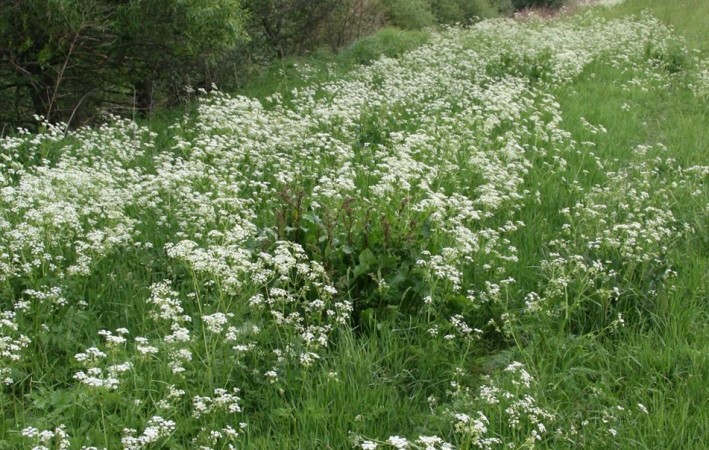 |
Wild Chervil (Anthriscus sylvestris) Wild chervil is a fast-growing herbaceous plant that takes over pasture-land and roadsides. Their deep taproots make this plant difficult to remove once they are established. They can be a host to carrot diseases, and their leaves can get into and quickly rot hay bales. |
|
 |
Tansy Ragwort (Senecio jacobaea) Tansy ragwort is a major agricultural invasive plant. They are poisonous to livestock, and can taint honey if bees forage on this plant. This plant is often found along roadsides or growing in disturbed areas. A single plant can product 150,000 seeds that remain viable for up to 15 years. |
|
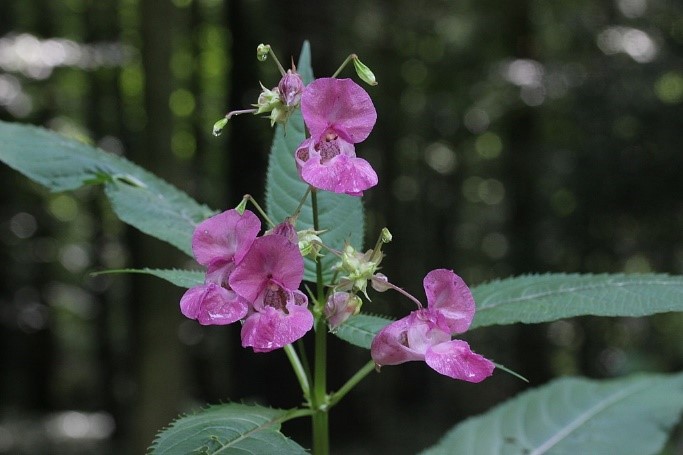 |
Himalayan Balsam (Impatiens glandulifera) Also known as Policeman’s Helmet, this plant is often found growing in ditches and creeks. Brought to North America as an ornamental plant, Himalayan balsam produces up to 2,500 seeds per plant which spread up to 5 m away via exploding pods. |
|
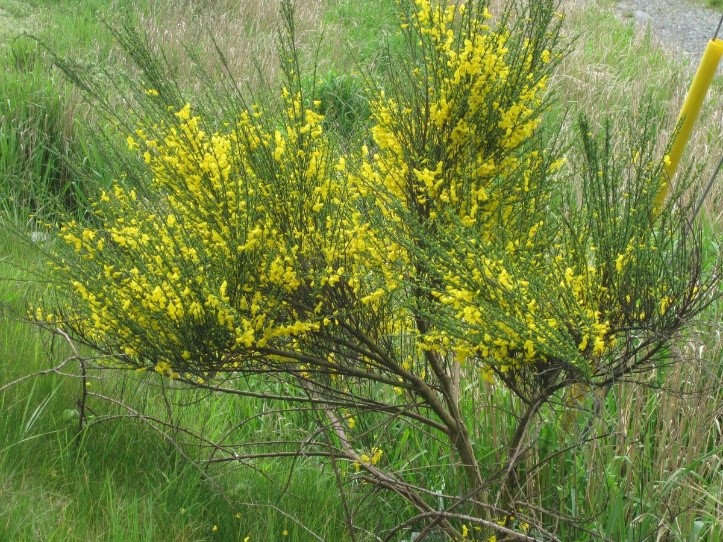 |
Scotch Broom (Cytisus scoparius) Originally from Europe, scotch broom grows in dry areas often along roadsides. Their roots release a phytotoxic that prevent other plants from growing in the same area. Each plant can produce up to 3,500 seedpods which burst when ripe, scattering seeds that can remain viable for up to 30 years. |
|
 |
Yellow Flag-Iris (Iris pseudacorus) The only yellow-flowered iris that grows in water in BC is the invasive yellow flag-iris. This aquatic plant grows in streams and creeks, and their thick and dense mat of rhizomes restrict water movement and prevent waterfowl from feeding. Some people can also have allergic reactions to the sap of the leaves. |
|
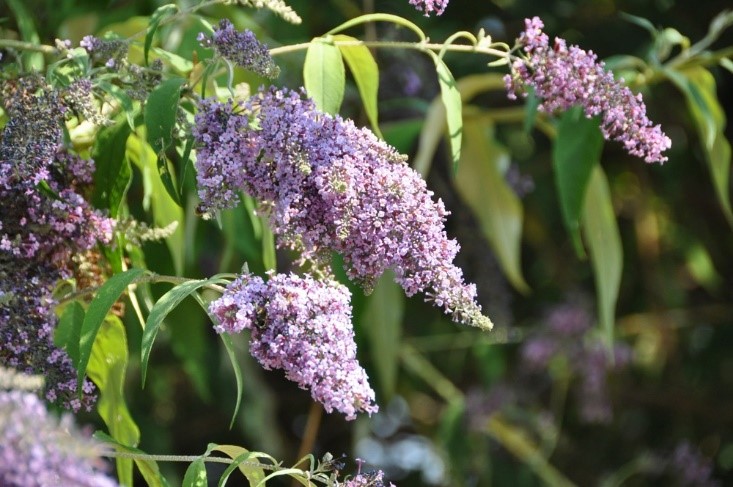 |
Butterfly Bush (Buddleja davidii) Butterfly bush is an ornamental plant that has escaped cultivation and invaded into natural areas. It spreads quickly by displacing other native vegetation, and have seeds that are dispersed by wind and water. This plant also alters nutrient amounts in soils impacting other vegetation growing in the same area. |
|
 |
Spurge Laurel (Daphne laureola) Toxic – Do not touch! Originally native to the UK, spurge laurel tend to grow in bunches in shaded areas. It contains a toxic sap that can cause skin rashes, or if consumed, nausea, swelling of the tongue, or even coma in serious cases. |
|
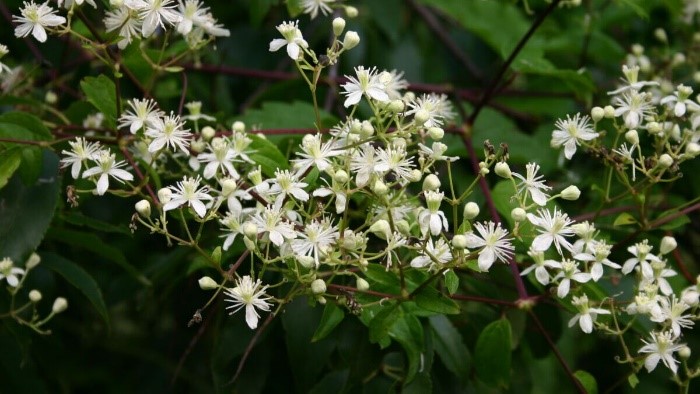 |
Wild Clematis (Clematis vitalba) Also known as Old Man’s Beard or Traveler’s Joy, wild clematis is a vining plant that can form a dense canopy that shades out other vegetation. It can be so vigorous that the weight can break branches of the supporting trees. |
|
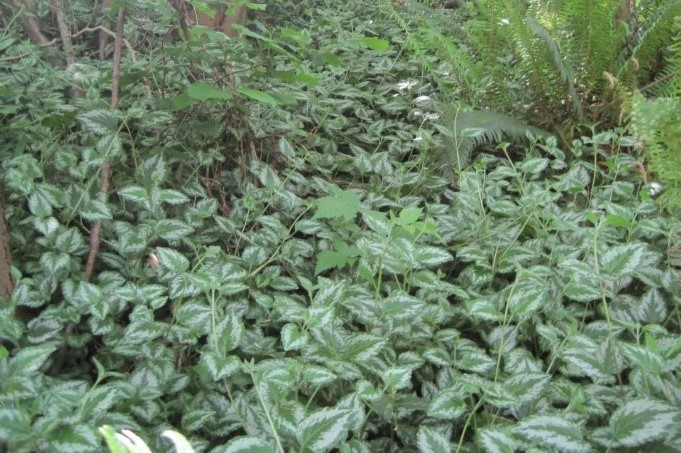 |
Yellow Archangel (Lamiastrum galeobdolon) Yellow archangel is commonly sold in hanging baskets, and when dumped in natural areas, will spread and cover the forest floor in a thick mat. This plant can reproduce from seed or from broken stem parts, and grows so densely that it prevents other vegetation from growing. |
|
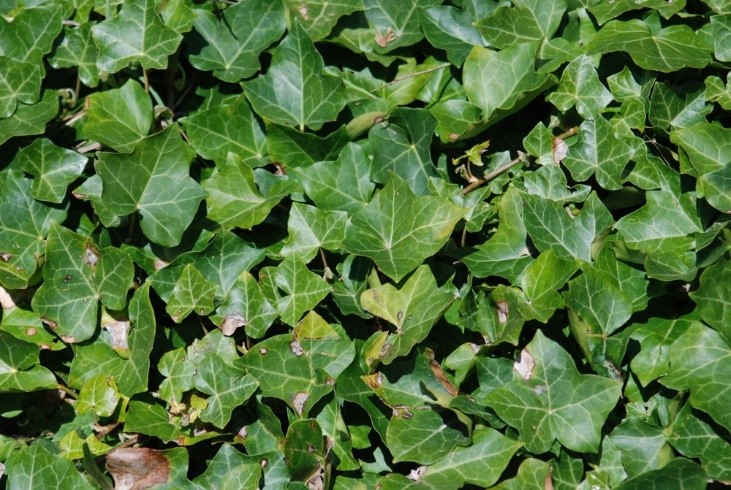 |
English Ivy (Hedera helix) English ivy is another escaped ornamental vining plant that is commonly plants as ground cover. It quickly grows densely up the trunks of trees and engulf shrubs and even buildings. This prevents other plants from growing, the weight of the vines can break tree branches, and the vine suckers can damage tree bark. |
|
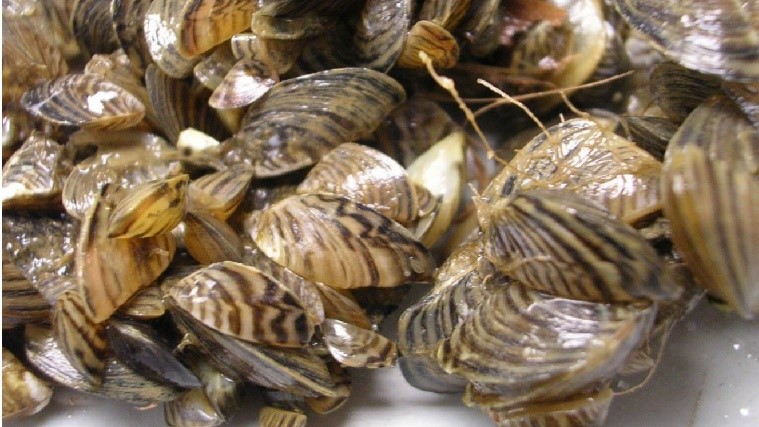 |
Zebra/Quagga Mussels (Dreissena spp.) In October 2023, the Okanagan Basin Water Board began calling for a temporary moratorium on watercraft coming into BC until results from Idaho’s efforts are known and the Province has closed any gaps in its Invasive Mussel Defence Program. If you travel to the Okanagan and have a watercraft, it is imperative to clean, drain, and dry your watercraft to prevent their spread. |
|
 |
Small-Mouth Bass (Micropterus dolomieu) Limited – Report if found! Smallmouth bass are aggressive predators, and are to blame for the decline and even local extinction of native species in other regions. They can feed on juvenile salmon and can also carry parasites that affect other native fish species. |
|
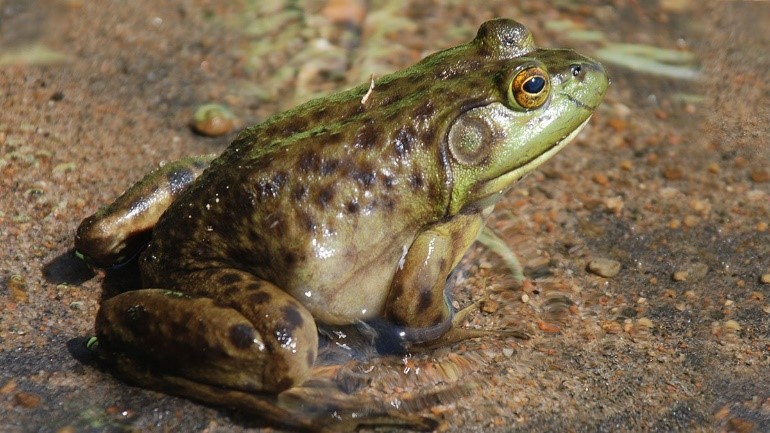 |
American Bullfrog (Lithobates catesbeianus) American bullfrogs are large amphibians that will feed on anything they can fit in their mouth – fish, other amphibians, even birds and rodents. They will predate our native species while also competing with them for food and other resources. |
|
 |
Goldfish (Carassius auratus) Invasive goldfish are a result of pets being released into natural waterbodies. Outside of a fish tank, goldfish can get very large, up to 25 cm long. Once goldfish get large enough, there are few predators that can prey on them, which allows their feeding to become even more destructive |
|
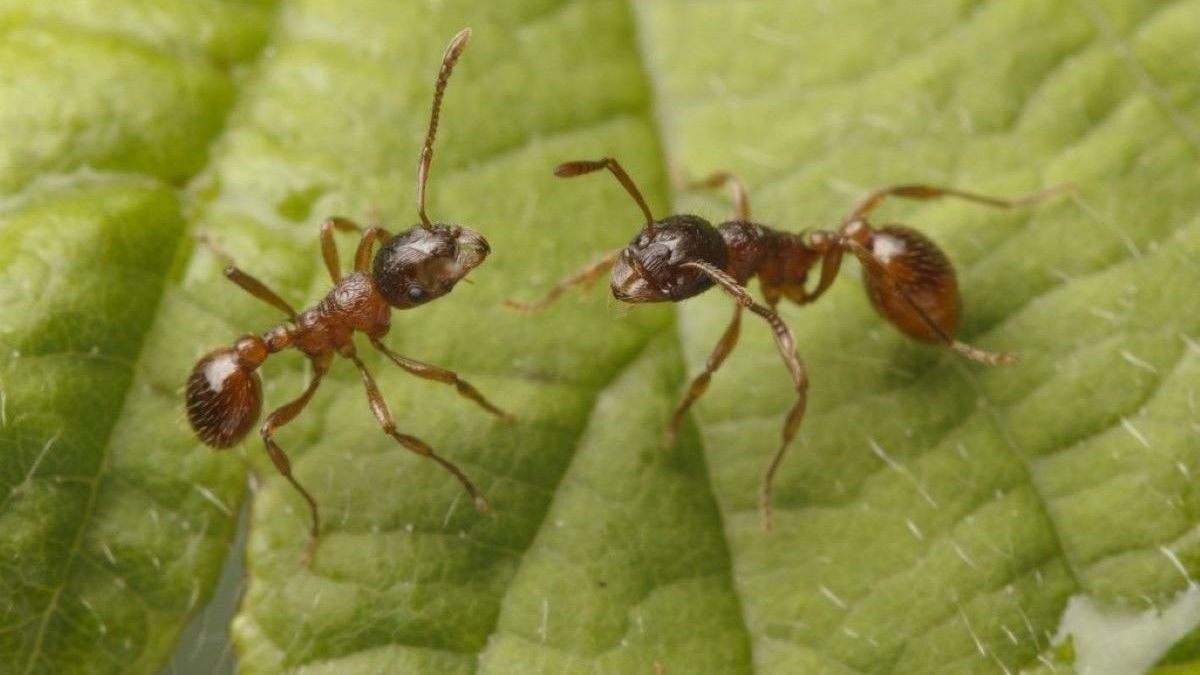 |
European Fire Ants (Myrmica rubra) These small reddish ants build their nests in the ground that are very well hidden. When disturbed, the ants will aggressively defend their territory. Their painful stings can cause varied reactions in people, from an itchy welt, to anaphylactic shock. See the European Fire Ants FAQs for more information. |
|
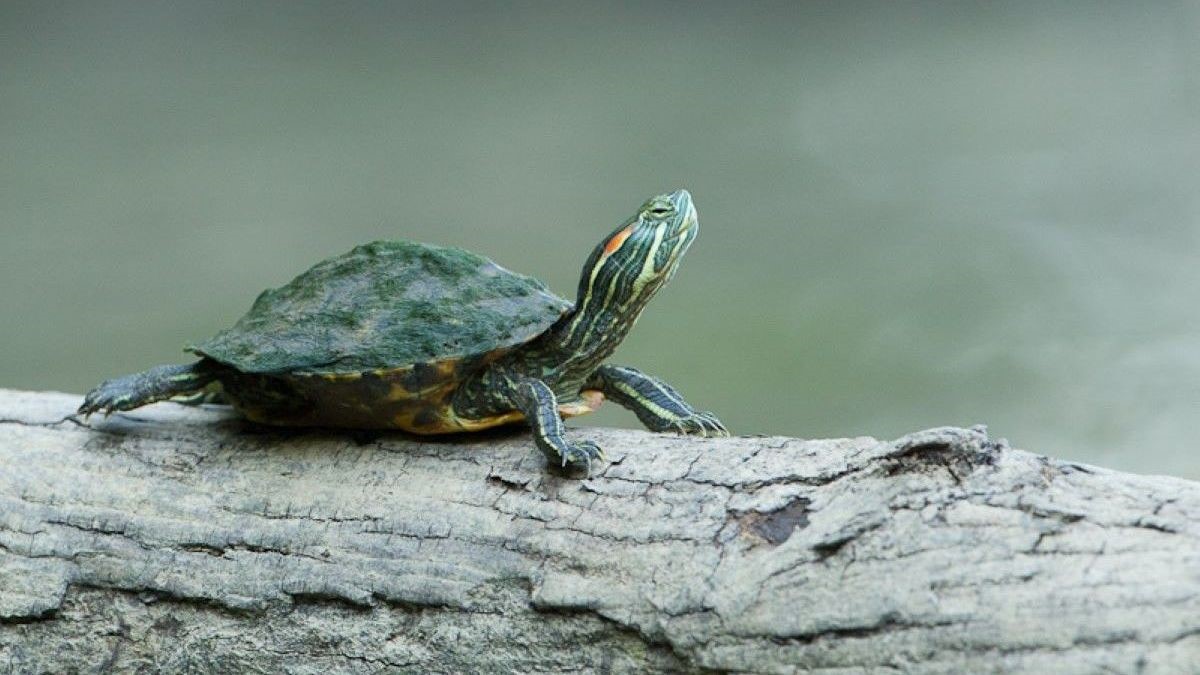 |
Red-Eared Slider (Trachemys scripta elegans) Invasive red-eared sliders are a result of pets being released into natural areas. These turtles will eat everything and hunt aggressively for food. They also compete for basking locations and crowd out our native species, specifically the Western Painted Turtles which are endangered |
|
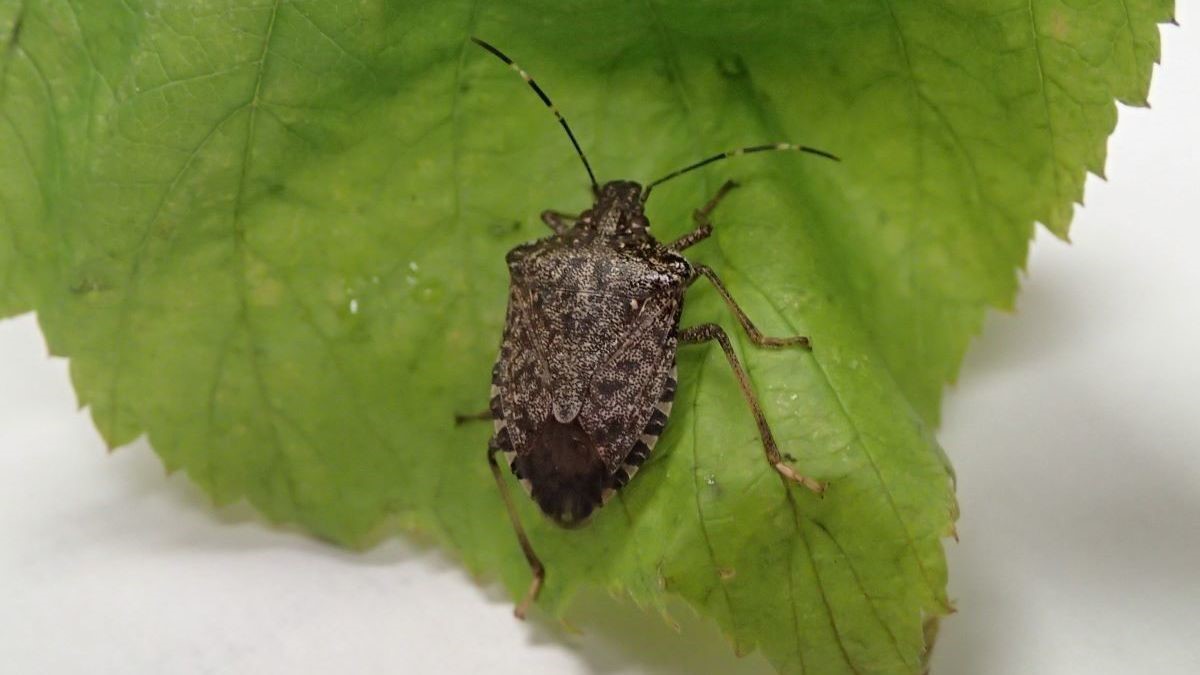 |
Brown Marmorated Stink Bug (Halyomorpha halys) This stink bug is a major agricultural pest, causing damage to a variety of fruits, vegetables, and ornamental plants crop. They are also a nuisance to homeowners as they will aggregate on and try to get into buildings when looking for a warm overwintering site. |
|
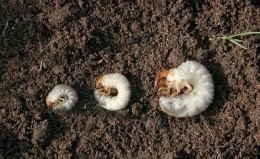 |
Chafer Beetle (Amphimallon majale) Chafer beetles are a nuisance pest that causes major damage to lawns and turf. The larva (grubs) feed on the roots, causing patches of dead brown areas, and attract crows and rodents that come and rip up the turf to feed on the grubs. Since the grubs feed under the grass, they can be difficult to eradicate. |
|
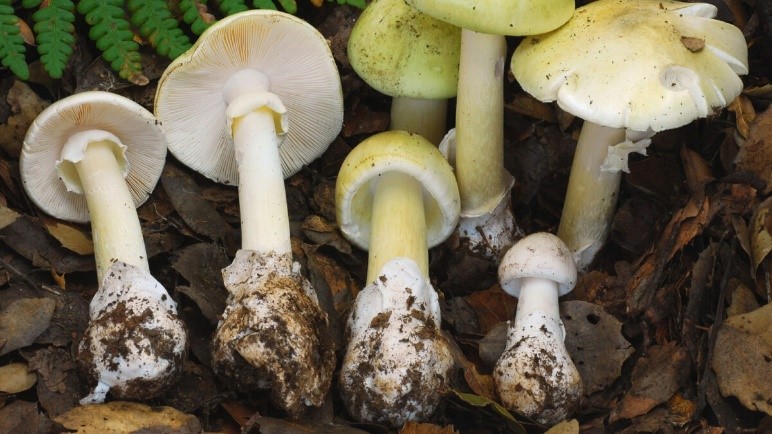 |
Death Cap Mushroom (Amanita phalloide) Deadly Poisonous – Do not consume! The aptly named death cap mushroom is the cause of the most fatal mushroom poisonings in the world. Never eat anything you are not sure of the identification. Report any sightings of this mushroom! |
Priority Invasive and Migratory Insects to Report
Do you spend time monitoring, photographing or observing insects? If so, your help is needed to watch for and report invasive and migratory insect pests that harm plants, causing damage to Canada’s environment, farm lands, forests, parks and other natural areas. Early detection is critical for slowing the spread of these insect pests. 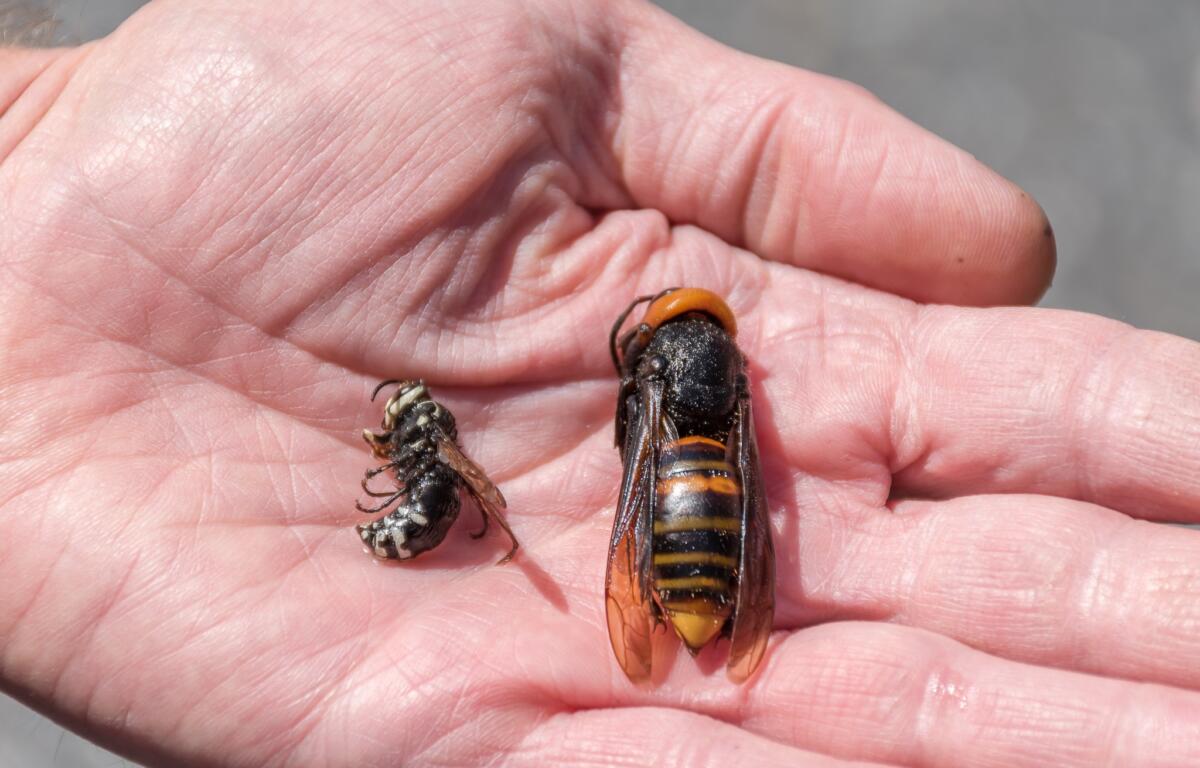
View the poster for your region to learn more about priority insect pests to watch out for. Follow this link to report your detections!
This initiative is a collaborative project developed by the Insect Surveillance Community of Practice of the Canadian Plant Health Council, a multi-partner body that coordinates action for the protection of plant health in Canada.
| Attachments | |||
| Description | Date | File Size | |
| BC- Reporting Invasive and Migratory Insects | 2023-08-09 | 436KB | |
